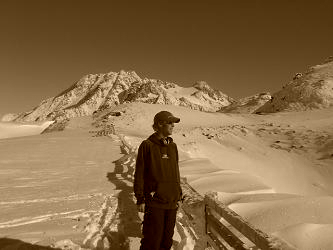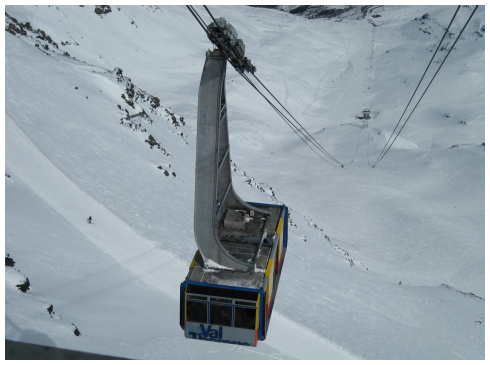Site menu:

History of Val Thorens
The history of Val Thorens is from 1971 to the present. It was quite a gamble when it was dreamed up by developer Schnebelen, and promoted by mayor Fontanet. It began with just 3 draglifts, and at first it seemed like 'a snowy version of the Far West.' The gamble paid off, and it's now prospering, and one of France's premier ski resorts. Read about the history of Val Thorens here.
____________________________
History of Val Thorens
History of Val Thorens from 1971 to the present day
Val Thorens began on 18th December 1971, when the first three draglifts were opened.
In 1967, Les Menuires had been built, and in 1969, the access road was extended up to Val Thorens. The key people at the origin of Val Thorens were Pierre Schnebelen, a property developer who planned and promoted the ski resort, and Joseph Fontanet, a politician who was mayor of the commune of St Martin de Belleville, and championed the scheme. (Fontanet was a Resistance fighter in the war; he was assassinated in Paris in 1980).
Schnebelen's original plan was to build two resorts - Val Thorens, on the northern, Tarentaise side, and Val Chaviere, on the southern, Maurienne side - with a shared area of glacier skiing in the middle. There would be skiing 365 days a year. Permission for Val Chaviere was refused, because it was in the Vanoise National Park, but Val Thorens went ahead. (There was summer skiing in Val Thorens for a number of years, but it stopped due to the shrinking of the glaciers, and the summer skiing chairlift, called 3300, was taken out in 2003).
Jean Beranger, a former trainer of the French women's ski team, and his wife Christine Goitschel, an Olympic ski champion, came to Val Thorens in the early days. In 1972, Beranger set up the ESF (French ski school), Club des Sports (ski and sports club), and the tourist office. At the outset, there were just four or five families living in Val Thorens, and Goitschel called it 'a snowy version of the Far West'.
1972 was also the year that the lift company, SETAM (la Société Téléphériques Tarentaise et Maurienne), was founded; the first apartment buildings were put up in that year, in the Péclet area of resort; and the first restaurant, Le Gloulou, opened (now Le Panda).
In 1974, two draglifts were installed on the Maurienne side of the Glacier de Chaviere, running up towards the Col de Thorens. They were called Polset and Lombarde, and they ran until 1987, when the shrinking of the glacier made them dangerous. The pylons were finally taken out in the summer of 2002, but a small building associated with them was left behind, as mountain guides had taken to using it as a refuge. These drags were all that came of the idea for the resort of Val Chaviere.
From 1979, the 'Caron' part of resort was built. The sports centre was opened in 1980. The 1980s marked the end of the 'concrete years', as a more traditional architectural style was adopted, with buildings clad in wood or local stone, and sloping roofs.
The 150-person Cime de Caron cable car was opened in 1982, and it was the largest cable car in the world at the time.

In 1990, the first of the funitel lifts was built, the Funitel Péclet. This type of double-cable car was developed by the SETAM. It's key feature is its excellent wind-resistance.
Investment in Val Thorens' lifts has continued up to the present day. There are now four funitel lifts in Val Thorens - Péclet, Grand Fond, 3 Vallées, and the Funitel de Thorens, which was brand new for the 2011/12 winter season. Deux Lacs and 3 Valleys 2 chairlifts were replaced for the 2013/14 winter season, while summer 2014 sees faster and more modern Plan de l' Eau and Portette chairs being put in place.
Val Thorens recently won a number of awards - World Ski Awards Best Resort in France and Best Resort in the World 2013 (given by World Travel Group); the World Snow Awards Most Improved European Resort 2013; and Best European Ski Resort 2014 (given by European Best Destinations following a public vote).
History of Val Thorens: video
This is an interesting video made by the tourist office (in French only). There are interviews with some of the key figures involved in the early days of Val Thorens, and some nice early photos and footage.